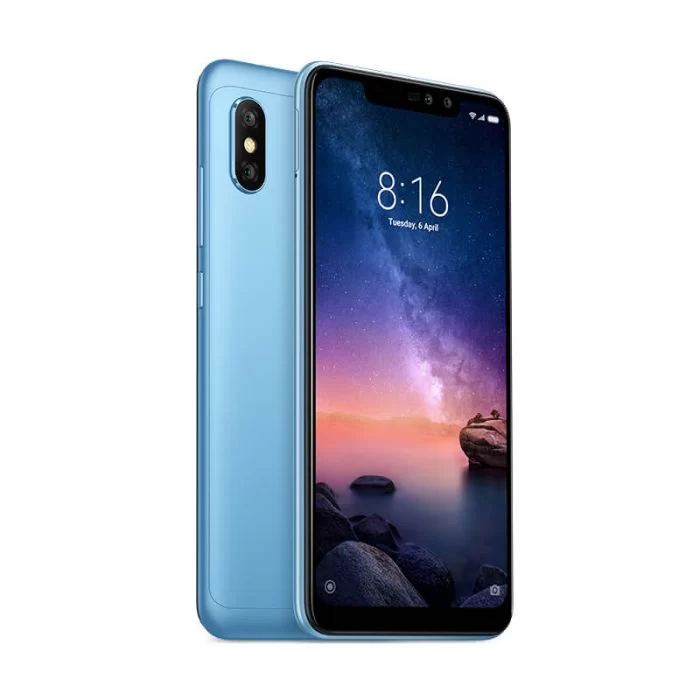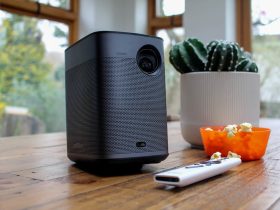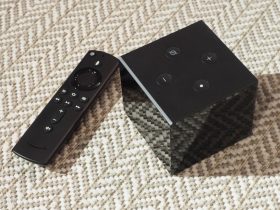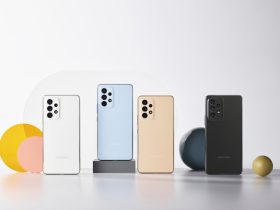No products in the cart.

This phone comes in an orange box, with the model’s name in white at the top, and on the sides, we can see stickers indicating that it is a global version. We can find the terminal’s specifications (in English) on the back.
As we open it, the phone is located at the top. Below, we find a box in which the skewer to open the card slot comes, some instructions for use (in English), and a flexible black TPU cover.
Further down, we have the micro USB cable of approximately 60cm in length. Also, the charger of 5V = 2A Spanish version.
Design and Screen
As we see it, the first thing that reminds us is the Xiaomi Redmi Note 5. It is a very modern terminal, with a top-notch screen (small tab on the screen).
This Xiaomi Redmi Note 6 Pro is made of an aluminum alloy, making it a slippery mobile. Because of that, I recommend putting a TPU case on it to prevent it from slipping out of your hand. The material with which this phone is made means fingerprints are not left on the chassis. It is a mobile with a fixed chassis whose battery cannot be changed without specific tools.
The dimensions are 76.3 mm wide x 157.9 mm high x 8.2 mm thick and weigh 176 grams. The front has a 6.26-inch Tianma nt36672a IPS LCD screen (of very high quality) with a resolution of Full HD+ 1080 x 2246 pixels. The density of pixels per inch is 398, a figure of a mid-range. The screen’s aspect ratio is 19:9, with a usable area of 82%. (If we don’t consider what the notch occupies, we are left with a resolution of 18:9).
Despite not having official figures, the brightness is not too good. Approximately it will be around 360 or 420 nits of brightness, so it will be necessary to strain your eyes when the sun hits the screen.
As we have already mentioned, the call speaker and a dual front camera are in the upper frame. In this case, it does not have a front flash, but the screen lights up, providing us with light when we need it. It also has a small white notification LED on the left side, which barely shines, and I have not been able to configure it. (I think this is a software bug).
In the rear area of the device, in the upper left corner, are the two cameras placed vertically, with a double LED flash between them (as usual since the appearance of the iPhone X and with a design traced to the Xiaomi Redmi Note 5). And smack dab in the middle is the fingerprint reader that’s fast and accurate. I must mention that this phone allows you to enter up to 5 different fingerprints for greater precision.
On the right side are the volume up and down buttons and the power on and off buttons just below. The slot to insert the nano-SIM tray is on the left side, as in most phones.
At the bottom, you have the micro USB connector (it’s not typed C, so we can’t connect the cable both ways) and the holes for the speaker and microphone.
On the upper side, we have the 3.5mm jack connector for headphones, and an infrared LED to use our smartphone as remote control (this is something you don’t appreciate until you have it).
Software
As I have already mentioned, having the global version of the terminal, the operating system is Android 8.1 Oreo multilanguage and upgradable via OTA (receiving the official update notification on the mobile).
At the moment, we only have MIUI 9.6, but in a short time, it will update to MIUI 10, just as other brand terminals are doing. This will change the appearance of the launcher (of the menus and screens). For those who don’t know, MIUI is a customization layer from the Xiaomi manufacturer. It provides a touch of simplicity thanks to the fact that it is very intuitive and complete.
Being a Global ROM, it incorporates Google services, including the Google Play application store, YouTube, Maps, and Gmail. On the other hand, different apps such as Amazon, Facebook, Joom, and Booking will be installed depending on the region you choose in the configuration. (These applications are easily uninstallable if you don’t want them in the terminal).
As in the latest reviews, this terminal only has a simple facial recognition for the Hong Kong region (this can be configured from the options menu). This unlock is based solely on photography and cannot open us in low light or when we wear sunglasses.
And since, on some occasions, I have come across malicious applications, I have run the Malwarebytes antivirus to check that the mobile is free of viruses. Power and Hardware
Xiaomi with this new Xiaomi Redmi Note 6 Pro. Like the Xiaomi Redmi Note 5, it comes with the same Qualcomm Snapdragon 636 mid-range processor.
It has eight cores with Kryo 260 structure that reaches 1.8 GHz speed. In addition, it adds an Adreno 509 GPU graphics processor capable of moving the heaviest games.
All this makes the performance of this chip ideal for the mid-range.
There are two models of this phone. We have the device with 3GB of RAM and 32GB of storage, being for my taste features that can be scarce. In addition, there is the one that has 4 GB of RAM of the LPDDR4 type and 64 GB of internal storage. Both are expandable via SD card.
If we stop at the phone’s internal memory, it has an eMMC 5.1 internal storage, which, in our case, reaches a reading speed of 185.44MB/s and a writing speed of 119.83MB/s.
What’s your reaction?
Love0
Sad0
Happy0
Sleepy0
Angry0
Dead0
Wink0







